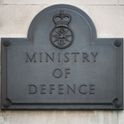The ocean, as we’re all learning quickly, isn’t too big to fail. Every week brings more news of warming waters, declining species, increasing marine pollution, and the consequences of leaving those problems unaddressed. To give marine wildlife and ecosystems—and the billions of people who depend on them—a shot at a sustainable future, policymakers around the world must take decisive action soon.
Fortunately, the United Nations appears poised to do its part. UN member countries are close to finalising a treaty that would bring much-needed protections to the highseas—the waters beyond national jurisdiction that make up nearly two-thirds of the ocean.
The highseas start 200 nautical miles from shore, a remoteness that for centuries helped shield these waters from the impacts of human activities. But advancements in industrial fishing, shipping, and seabed mining technology, along with the effects of climate change, have greatly increased threats in this vast region. And because the ocean is a singular, interconnected ecosystem, harm to the highseas will inevitably spread to near-shore waters, affecting fisheries, coral reefs, coastal communities, and regional and national economies.
How? For one, the highseas serve as migratory routes for whales, turtles, sharks, dolphins, tuna and more, species that are vital to the balance of marine ecosystems worldwide. Disrupting those animals along those routes almost certainly will have ripple effects in the areas closer to shore where the species feed and breed. Further, beneath the highseas lie hydrothermal vents, which are home to fascinating communities of life, and seamounts, some of which create upwellings of nutrient-rich water toward the surface, providing food for all manner of ocean wildlife.
On their own the highseas hold significant economic value: The Global Ocean Commission estimates that highseas fisheries account for up to US$16 billion in gross catch annually and also that the value of carbon storage by high-seas ecosystems ranges between US$74 billion and US$222 billion annually.
But no government has jurisdiction over the highseas and, because of that, these waters are governed by diffuse agreements among countries and sectors—pacts that fail to protect and conserve the rich but vulnerable biodiversity of the highseas.
That’s why the UN treaty is so important, and why UN member countries should move to finalise the agreement at their next round of negotiations. That session was scheduled for late March but has been postponed. The draft of the agreement now under negotiation creates a mechanism for establishing marine protected areas (MPAs) on the highseas. Numerous studies show that MPAs help imperilled species and ecosystems recover from damage while protecting and conserving biodiversity in existing healthy areas. In national waters, MPAs have been proved to boost biodiversity and resilience to climate change, effects that together help keep ecosystems in balance and populate neighbouring fisheries. To convey the most benefit, marine reserves should be large, highly protected, isolated, well-enforced, and longstanding. The draft treaty also creates strong international standards to mandate environmental impact assessments before any new human activity—such as fishing, mining, or novel activities such as aquaculture—could begin on the highseas.
The upcoming negotiations are the latest step in a process that started over a decade ago, when UN member countries agreed that safeguarding highseas biodiversity should be a priority. Delegates began negotiating this deal in 2018. By completing this treaty, with mechanisms to create MPAs and require environmental impact assessments, UN member countries would show that they believe in a healthy future for the highseas, and our collective ability to achieve it."
Prospect recently hosted a roundtable with Lord Goldsmith, diplomats and marine experts. Please visit the following link for coverage of the discussion: How can we encourage nations to come together to protect the high seas?















